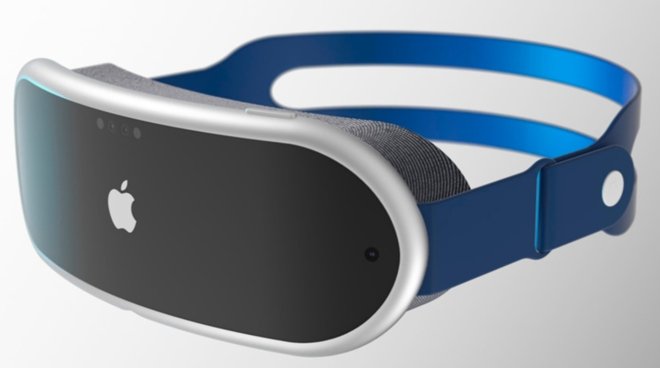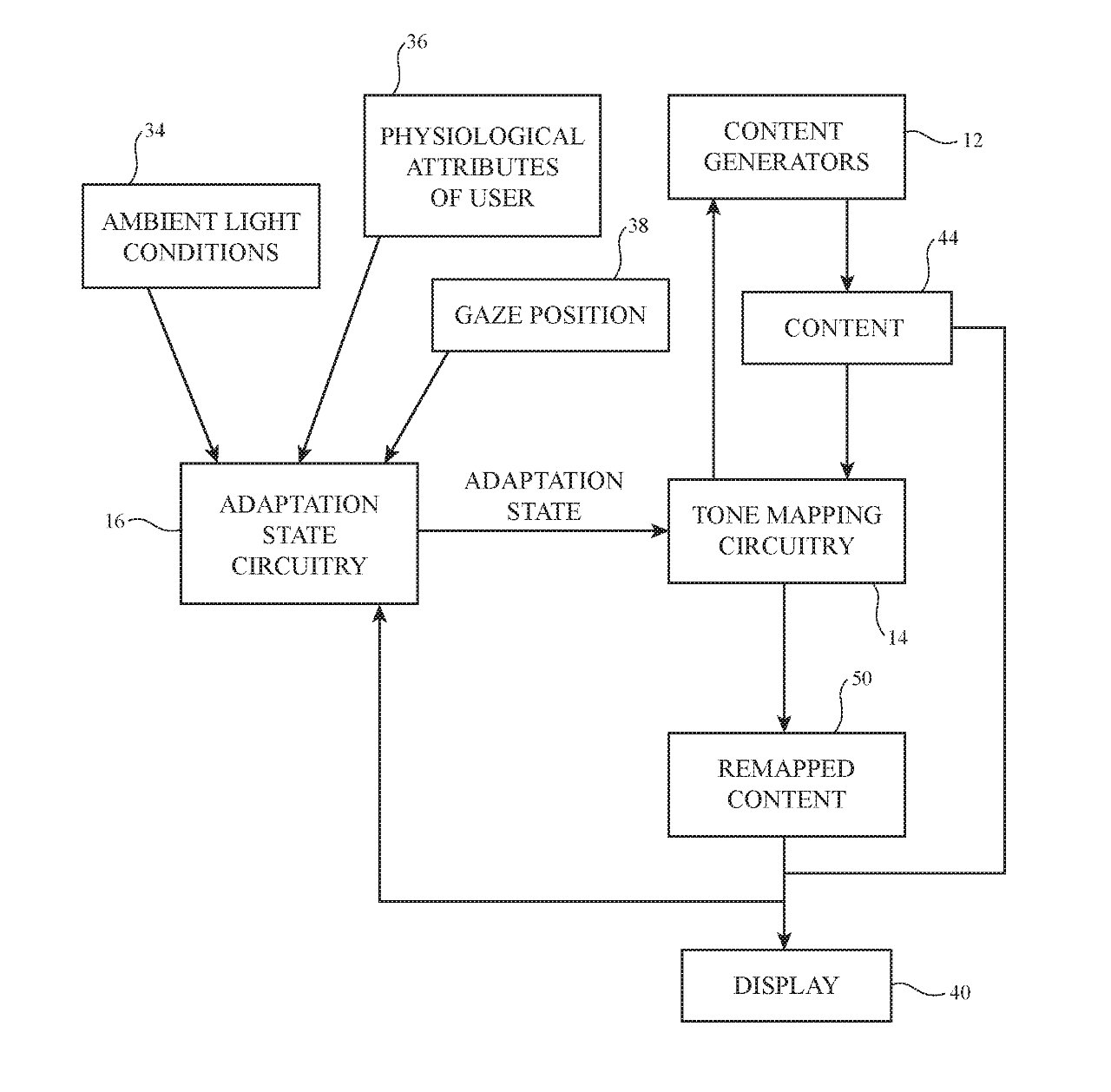'Apple Glass' could adjust brightness to make use more comfortable
Apple wants to avoid the discomfort of a user taking off an Apple AR headset like "Apple Glass," and going from darkness to the brightness of the real environment around them.

If you've ever put on a Virtual Reality headset, you've noticed two things. It seems dark at first until your eyes adjust and whatever VR experience you're watching turns on.
Then when you take the head-mounted display (HMD) off, you're going to be blinking because of how bright the real world seems. Apple wants to end, or at least reduce, both of these issues by instead intelligently adjusting the brightness of an AR or VR experience in a HMD.
"If care is not taken, a head-mounted device may be cumbersome and tiring to wear," says Apple in the newly-revealed patent application "Electronic Device with Adaptive Display."
"The images on the display may appear too dark and washed out when the user first puts the head-mounted device on his or her head," it continues. "The user may experience dazzle or discomfort when transitioning out of a virtual reality viewing experience."
The patent application is concerned with how the "dynamic range of a head-mounted display may be perceived as insufficient depending on the adaptation state of the user's eyes."
Apple's proposal is to use what it describes as "control circuitry" that includes an ambient light sensor. This may "gather physiological attributes of a user such as blink rate, pupil size, and eye openness from a camera," to help the HMD.
The aim is to adjust the brightness to suit a user, and the user is coming from outside the device. Yet rather than necessarily having any light sensors registering the outside environment, Apple's proposal appears to focus solely on what the HMD can learn from the user's eyes.
"Control circuitry in the electronic device may estimate a brightness adaptation state of the user that is wearing the electronic device," continues the patent application. "The control circuitry may adjust a brightness of the display based on the user's adaptation state."
"This may include, for example, optimizing a brightness range of the display for the current adaptation state of the user," it says, "[and] adjusting a brightness range of the display to have a desired effect on the user's adaptation state (e.g., to help "guide" the user's current adaptation state to a different adaptation state)."

Apple's HMD devices could also adjust the "brightness range" of an AR/VR experience "at certain periods of time to boost the perceived dynamic range of the display."
Apple also proposes "adjusting brightness in some regions of an image differently." That's in order to "account for the user's adaptation state," but it potentially also allows for another application of this system.
This could be as much about power saving as it is to do with comfort. Repeatedly, the patent application proposes measuring the luminance at the point the user is looking, which means using gaze detection.
Apple has very many patents and patent applications regarding attention and gaze detection, or even stress.
This new one, though, has the possibility that it can become a battery-saving feature. If it knows what the brightness is at the point a user is focusing, it could dim all of the rest of the AR/VR experience
The patent application is credited to four inventors. Two of them -- Nicholas P. Bonnier, and Christina G. Gamboacorta -- have previously worked on related projects. They include a proposal that would see "Apple Glass" help wearers see better in low light.
Stay on top of all Apple news right from your HomePod. Say, "Hey, Siri, play AppleInsider," and you'll get latest AppleInsider Podcast. Or ask your HomePod mini for "AppleInsider Daily" instead and you'll hear a fast update direct from our news team. And, if you're interested in Apple-centric home automation, say "Hey, Siri, play HomeKit Insider," and you'll be listening to our newest specialized podcast in moments.

If you've ever put on a Virtual Reality headset, you've noticed two things. It seems dark at first until your eyes adjust and whatever VR experience you're watching turns on.
Then when you take the head-mounted display (HMD) off, you're going to be blinking because of how bright the real world seems. Apple wants to end, or at least reduce, both of these issues by instead intelligently adjusting the brightness of an AR or VR experience in a HMD.
"If care is not taken, a head-mounted device may be cumbersome and tiring to wear," says Apple in the newly-revealed patent application "Electronic Device with Adaptive Display."
"The images on the display may appear too dark and washed out when the user first puts the head-mounted device on his or her head," it continues. "The user may experience dazzle or discomfort when transitioning out of a virtual reality viewing experience."
The patent application is concerned with how the "dynamic range of a head-mounted display may be perceived as insufficient depending on the adaptation state of the user's eyes."
Apple's proposal is to use what it describes as "control circuitry" that includes an ambient light sensor. This may "gather physiological attributes of a user such as blink rate, pupil size, and eye openness from a camera," to help the HMD.
The aim is to adjust the brightness to suit a user, and the user is coming from outside the device. Yet rather than necessarily having any light sensors registering the outside environment, Apple's proposal appears to focus solely on what the HMD can learn from the user's eyes.
"Control circuitry in the electronic device may estimate a brightness adaptation state of the user that is wearing the electronic device," continues the patent application. "The control circuitry may adjust a brightness of the display based on the user's adaptation state."
"This may include, for example, optimizing a brightness range of the display for the current adaptation state of the user," it says, "[and] adjusting a brightness range of the display to have a desired effect on the user's adaptation state (e.g., to help "guide" the user's current adaptation state to a different adaptation state)."

Apple's HMD devices could also adjust the "brightness range" of an AR/VR experience "at certain periods of time to boost the perceived dynamic range of the display."
Apple also proposes "adjusting brightness in some regions of an image differently." That's in order to "account for the user's adaptation state," but it potentially also allows for another application of this system.
This could be as much about power saving as it is to do with comfort. Repeatedly, the patent application proposes measuring the luminance at the point the user is looking, which means using gaze detection.
Apple has very many patents and patent applications regarding attention and gaze detection, or even stress.
This new one, though, has the possibility that it can become a battery-saving feature. If it knows what the brightness is at the point a user is focusing, it could dim all of the rest of the AR/VR experience
The patent application is credited to four inventors. Two of them -- Nicholas P. Bonnier, and Christina G. Gamboacorta -- have previously worked on related projects. They include a proposal that would see "Apple Glass" help wearers see better in low light.
Stay on top of all Apple news right from your HomePod. Say, "Hey, Siri, play AppleInsider," and you'll get latest AppleInsider Podcast. Or ask your HomePod mini for "AppleInsider Daily" instead and you'll hear a fast update direct from our news team. And, if you're interested in Apple-centric home automation, say "Hey, Siri, play HomeKit Insider," and you'll be listening to our newest specialized podcast in moments.

Comments
There are clearly two products in development, one is a closed, light-tight (more or less) VR HMD which could also provide AR experiences using cameras to relay the outside world in and add AR elements to it. The other is AR glasses that are more like eyeglasses using waveguides to project AR imagery on top of the real world environment, which people have been referring to as "Apple Glass". This patent is clearly aimed at the former VR HMD product, not the AR glasses product.